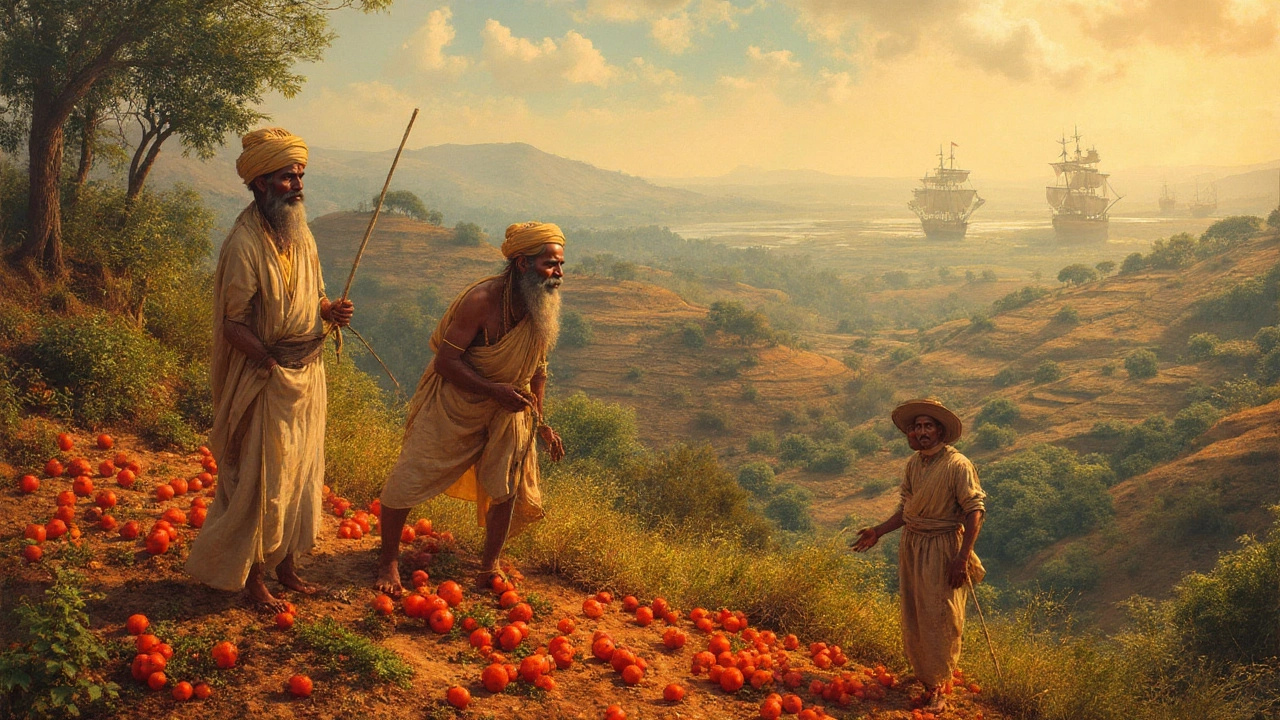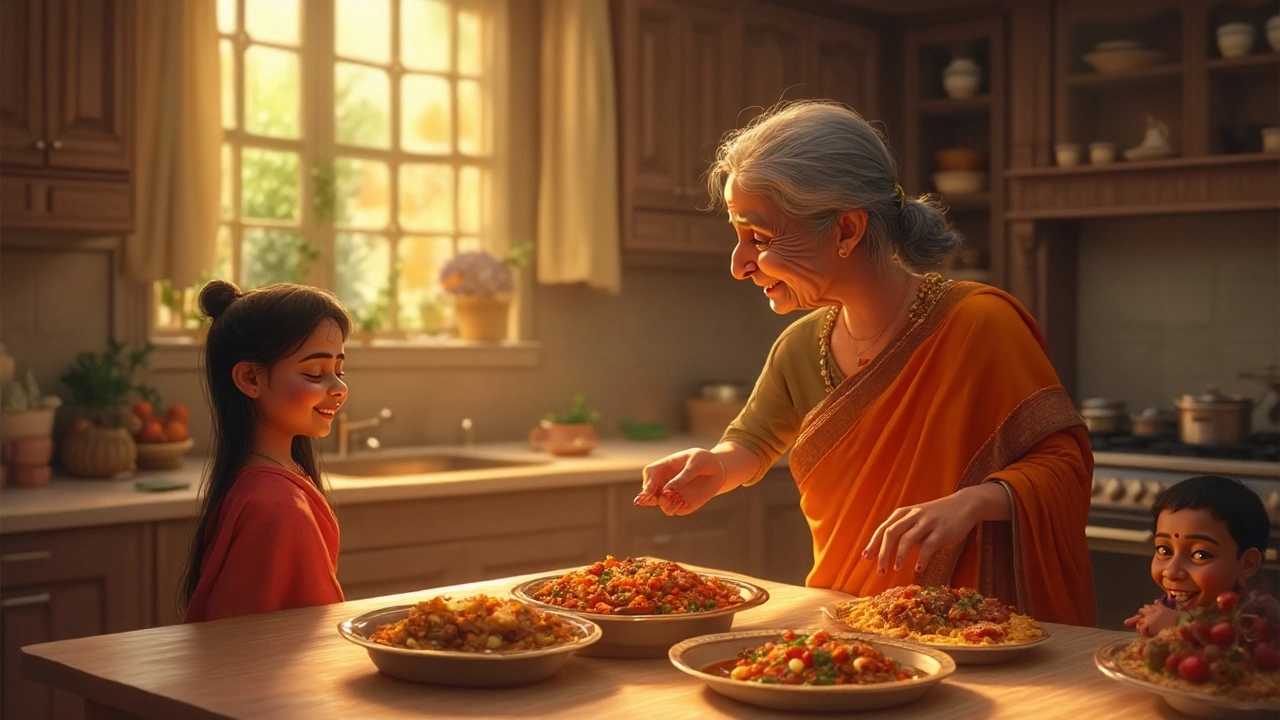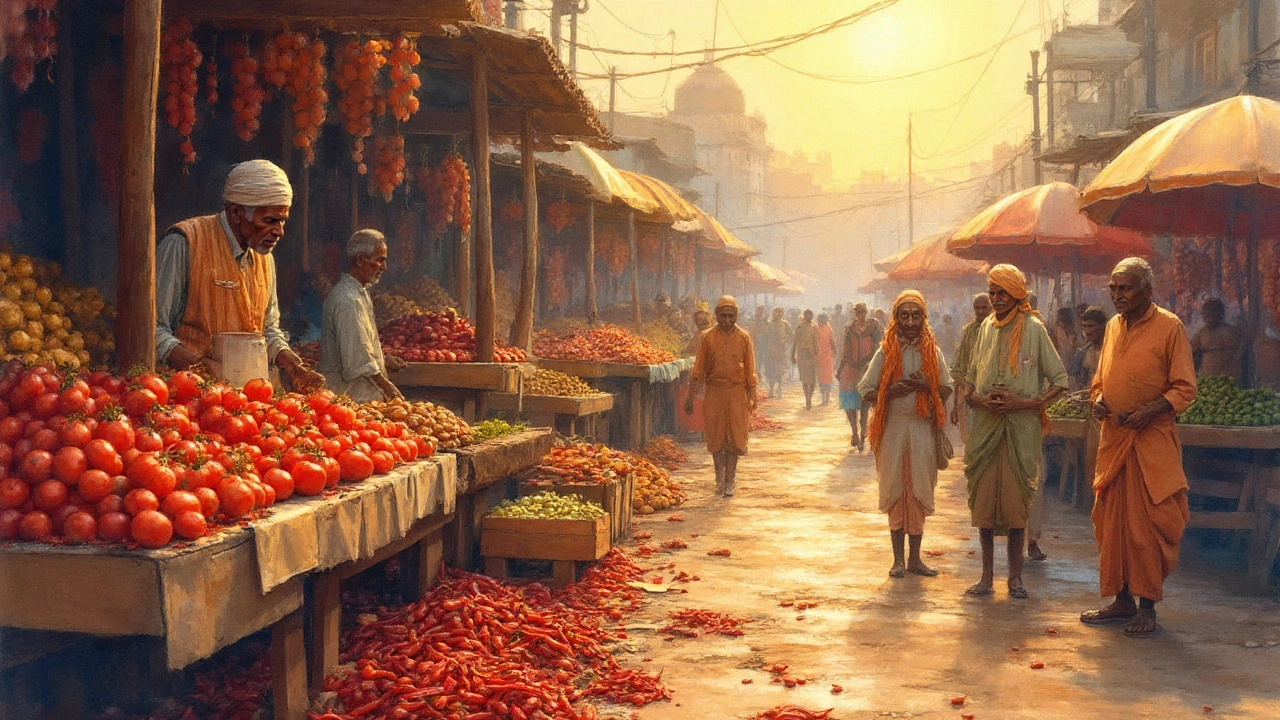Ever bite into a spicy Indian potato curry and wondered where on earth the humble potato originally comes from? Spoiler: not India. So many vegetables we now see in bustling bazaars—from shiny red tomatoes to cool, crisp cabbages—weren’t always part of India’s food story. They journeyed here, riding on ships, braving new lands, and ended up blending almost seamlessly into Indian everyday meals. If you’ve ever wondered what’s truly Indian and what’s been adopted, you’re in for some surprises—and a bit of a history lesson sands the boring bits.
Where Did These Vegetables Really Come From?
The origins of our favorite vegetables can be as tangled as a bowl of vegetable noodles. The potato, for example, rolled into Indian kitchens only in the 16th century. Originally found high up in the Andes mountains of South America, the potato traveled across oceans with Spanish and Portuguese traders, eventually turning up in Goa and slowly taking root locally. You can thank Portuguese ships and their global foraging habits for your aloo tikki chaat.
Tomatoes, another superstar of Indian cuisine, also share a South American ancestry. The Spanish explorers were wowed by the plant in the Aztec heartlands, picked up a few, and spread them across the world like food influencers of their time. Surprisingly, tomatoes only became regulars in Indian curries well into the 19th century. Before that, tamarind and amchur (dried mango powder) provided sourness to Indian food.
Chilies are a hot topic—literally. Indian cooking is practically defined by its fiery heat, but chilies are not native. Portuguese traders dropped off chili peppers from Central and South America in the 15th and 16th centuries at ports like Goa. Up until then, black pepper was India’s top spicy export. Now, it’s hard to imagine Indian dishes minus chili heat, but the shift only began 400–500 years ago.
Even cabbage, so popular in Indian dry sabzi or cabbage paratha, is a European newcomer. The vegetable made its way to Indian colonial port cities with the British in the 18th century. Peas, carrots (the orange ones), cauliflower, and a whole bunch of beans all mark their roots in Europe, the Middle East, or even the Americas. Before that, Indian kitchens thrived with indigenous gourds (think bottle gourd and bitter gourd), yams, drumsticks, and local greens.
| Vegetable | Region of Origin | Approximate Arrival in India |
|---|---|---|
| Potato | South America (Andes) | 16th century |
| Tomato | South America | 17th–18th century |
| Chili Pepper | Central/South America | 16th century |
| Cabbage | Europe | 18th century |
| Carrot (orange) | Europe/Western Asia | 18th–19th century |
| Peas | Mediterranean/Europe | 17th–18th century |
| Cauliflower | Cyprus/Europe | 19th century |
| French Beans | Central/South America | 19th century |
| Pumpkin (Certain Varieties) | Americas | 15th–16th century |
If you’re thinking spinach or okra, those are truly desi (Indian), with ancient Sanskrit names and thousands of years of use. But that tomato in your sambar or the cabbage in your sabzi? These are imports that just settled in and never left.

How Foreign Vegetables Changed Indian Farming and Cooking
The introduction of foreign vegetables was a game-changer for Indian farmers. With these new crops came new challenges and opportunities—think higher yields, fresh flavors, and even economic boosts. The late arrival of potatoes, tomatoes, and chilies gave farmers hardy options able to withstand India’s varied climates. The potato alone now feeds millions in India, with about 50 million tonnes grown every year, making India the world’s second-largest producer after China. It’s a staple in North Indian curries, masala dosas, samosas, and even breakfast poha.
Tomatoes rewrote the recipe books. From thick, tangy gravies to rich rasam, Indian kitchens filled up with lush red sauces and powerful new flavor combos after tomatoes arrived. Their acidic punch and bright color made them a star, so much so that now, at any local market from Kerala to Kashmir, tomatoes are among the most bought veggies.
Chilies? India is now the world’s largest producer and exporter of them. Try imagining a plate of spicy Andhra chicken curry or a Rajasthani laal maas without chilies—it’s just not happening. They adapted so well to Indian growing conditions that India now boasts hundreds of chili varieties, from the blazing-hot Bhut Jolokia of Assam to the mild Kashmiri chili that brings more color than heat.
Cabbage, carrots, cauliflower, and peas helped Indian farmers diversify. These vegetables thrived in cooler North Indian climates and eventually spread down south. Urban growers started experimenting with them too. Now, farmers’ markets and grocery stores display them in neat stacks, as if they’d always belonged. And with the boom in urban gardening, people in Indian cities are growing these so-called foreign veggies on terraces and balconies.
But these arrivals weren’t just about farming. Think about recipes: sabzis, pickles, chutneys, stuffed parathas, and stews all got a makeover. Even age-old Ayurvedic texts had to work to draw lines between “native” and the incoming lineup of nutritional powerhouses. Foreign vegetables like tomatoes, potatoes, and chillies blended into India’s diverse regional cuisines—sometimes so well that people argue fiercely about whether they were always there.

Making the Most of Foreign Vegetables in Your Indian Garden
Fancy growing your own non-native veggies? Good news: Indian home gardeners are already on it, mixing up local and imported produce in pots, terrace beds, and backyard plots. Potatoes are a favorite for beginners because they’re fairly hardy. Just drop seed potatoes into well-drained soil, water regularly, and keep them away from waterlogging—my neighbor Ramesh grows enough for his own family by using leftover potato peelings. If you try this trick, bury the peelings with some “eyes” (buds) facing up.
Tomatoes need a bit more care—give them at least 6–8 hours of sun, water at the base (not the leaves), and keep an eye out for pests. They love soil that’s rich in compost, so save your kitchen scraps for your compost bin or pile. If you see wilting leaves, check for fungal issues and water in the morning to let foliage dry through the day.
Chilies are famously easy to grow in Indian weather. Start them in pots if you don’t have garden space—Rufus, my dog, learned very quickly to stay away from the fiery fruit after one accidental sniff. Give them steady sunlight, warmth, and decent drainage, and you’ll have your own stash of fresh green or red chilies in a couple months.
Cabbages and carrots, though, can be trickier in warmer and more humid regions. They do best with steady moisture and consistent, cooler weather—perfect for winters in North India or shaded setups in the South. Carrots need deep, loose soil to grow straight and unforked. Peas, with their sweet pods, thrive if you support them with trellises and protect from too much heat.
Looking for a pep-up for your garden or kitchen? Try growing French beans or cauliflower. Beans love a climb, so set up supports or lattice, and harvest young for extra tender pods. Cauliflower appreciates a bit of shade if your area is scorching hot, and likes steady, nitrogen-rich soil for large, tight heads.
These vegetables aren’t just about taste—they’re packed with vitamins, minerals, and dietary fiber. Potatoes bring starch and potassium; tomatoes supply Vitamin C and lycopene for heart health; chilies give Vitamin A, B6, and antioxidants; carrots pack beta carotene, and peas load up on protein. If you’ve ever wondered why urban kids gravitate toward brightly colored, imported-looking snacks, maybe it’s time to show them the joy of growing their own. Take it from me: nothing beats harvesting your own cherry tomatoes for a quick salad or rolling out fresh carrot paratha with your family.
Curious about the nutritional showdowns? Here’s a quick look:
| Vegetable | Main Nutrients | Calories (per 100g) |
|---|---|---|
| Potato | Carbs, Potassium, Vitamin C | 77 |
| Tomato | Vitamin C, Lycopene, Potassium | 18 |
| Chili Pepper | Vitamin A, C, Capsaicin | 40 |
| Cabbage | Vitamin K, C, Fiber | 25 |
| Carrot | Beta-carotene, Fiber, Vitamin A | 41 |
| Peas | Protein, Fiber, Vitamin K | 81 |
So, the next time someone asks about “Indian” vegetables, you’ll have plenty to share—maybe even over a steaming bowl of potato curry or a fresh tomato salad. India’s food story isn’t just home-grown. It’s a wild, global ride, filled with flavors that crossed oceans and landed right on your plate.

